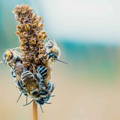
How to Help Honeybees Survive the Dearth Season
During a dearth period, when there is a scarcity of nectar and pollen sources for honeybees, it is crucial for beekeepers to understand the importance of providing proper care and support for their hives.
By understanding the importance of caring for honeybees during dearth periods and implementing these essential tips, beekeepers can play a vital role in ensuring the well-being and sustainability of honeybee colonies.
FUN FACT: A honeybee must tap 2 million flowers in order to make one pound of honey.
Subscribe
To join our mailing list and never miss an update!
1. Provide Supplemental Feeding to Avoid Starvation
During dearth periods, it may be necessary to provide supplemental feeding to honeybees. Supplemental feeding involves providing sugar syrup or pollen substitutes to the bees, serving as an alternative food source when natural sources are limited. This helps to prevent the bees from starving and supports their overall health and survival during challenging times.
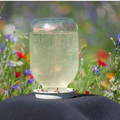
There are different methods for providing supplemental feeding, including:
• Sugar syrup: Beekeepers can make a sugar syrup by dissolving granulated sugar in water. The ratio of sugar to water should be 1:1 for this period. Beekeepers can use feeders, such as top feeders or entrance feeders, to provide the sugar syrup to the bees. It is essential to ensure that the sugar syrup is easily accessible to the bees and that the feeders are properly maintained and cleaned to prevent contamination.
• Pollen substitutes: During dearth periods, when natural sources of pollen are scarce, beekeepers can provide pollen substitutes to ensure that the bees receive adequate protein. These substitutes are typically made from a combination of ingredients, including dried pollen, soy flour, brewer's yeast, and other additives. Beekeepers can offer these substitutes in the form of patties placed inside the hive.
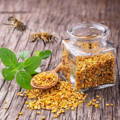
2. Create Additional Water Sources
During dearth periods, when natural water sources may be limited, it is important to provide water stations near the hive. These water stations can be as simple as shallow dishes filled with water or specialized bee waterers.
Bees require water for various purposes, including regulating the temperature inside the hive, diluting honey to feed larvae, and cooling the hive during hot weather. Without access to water, bees can become dehydrated, which can lead to weakened colonies and increased mortality rates.
• Location: Choose a strategic location for the water source that is easily accessible to the bees. Ideally, it should be within a short flying distance from the hive to minimize energy expenditure. The water source should also be sheltered from extreme weather conditions, such as strong winds or direct sunlight, to prevent it from evaporating too quickly.
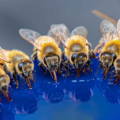
• Container: Use a shallow container or tray to hold the water. Bees need a landing surface, so providing stones or floating objects in the water can help them easily access and drink from it. Avoid using deep containers or ones with steep sides, as this can increase the risk of drowning for the bees.
• Cleanliness: Regularly clean and replenish the water source to ensure its cleanliness and freshness. Bees are attracted to clean water sources, so keeping it free from debris, algae, or other contaminants is essential. Emptying and refilling the container at least once a week can help prevent the buildup of harmful bacteria or mosquito larvae.
• Additives: Consider adding certain additives to the water to make it more appealing to the bees. For instance, placing a few rocks or twigs coated with honey or sugar syrup near the water source can attract bees and encourage them to drink. However, be cautious not to put excessive amounts of additives that could harm the bees or make the water source less appealing to them.
• Multiple sources: To prevent overcrowding or competition among bees, provide multiple water sources in different areas of your apiary. This can help distribute the bees' activity and prevent congestion at a single water source. Additionally, having multiple water sources can also reduce the risk of the bees’ spreading diseases if one source becomes contaminated.
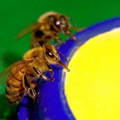
3. Minimize Stress on the Hive
During dearth periods, when nectar and pollen sources are scarce, it is essential for beekeepers to minimize stress on the hive. Stress can have detrimental effects on honeybee colonies, weakening their immune systems and making them more susceptible to diseases and pests. Here are some tips for minimizing stress on the hive during dearth periods:
• Limit Hive Inspections: While regular hive inspections are necessary for monitoring the colony's health, reducing the frequency of inspections during dearth periods can minimize disturbance. Limit inspections to once every few weeks, focusing on essential tasks such as checking for signs of disease, monitoring food stores, and ensuring the queen is laying eggs.
• Avoid Excessive Smoke: While smokers can be useful tools for calming bees during hive inspections, it is important to avoid excessive smoke. Heavy smoke can overstimulate the bees, causing stress and agitation. Use a minimal amount of smoke necessary to keep the bees calm and focus on efficiently completing the inspection or task at hand.
Trending Articles
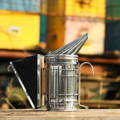
• Reduce Noise and Vibrations: Loud noises and vibrations can disrupt the hive and induce stress in the bees. Avoid sudden and loud sounds near the hive, such as banging or dropping equipment. Additionally, when transporting or moving hives, do so carefully and smoothly to minimize vibrations that can disturb the bees.
• Provide Adequate Ventilation: Proper ventilation is essential for regulating the humidity and air quality inside the hive. Ensure that the hive has sufficient ventilation to prevent moisture buildup, which can lead to mold and respiratory issues for the bees. However, be cautious not to provide excessive ventilation, as it can make the hive susceptible to robbing from other colonies.
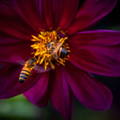
4. Control Common Beehive Pests
Pest management: Dearth periods can increase the vulnerability of honeybee colonies to pests such as varroa mites, (SHV) small hive beetles, and wax moths. It is crucial to implement effective pest management strategies to protect the hive during these times. This may involve using organic treatments, regular hive inspections, and maintaining a clean hive environment.
Varroa mites are one of the most significant threats to honeybee health, especially during dearth periods when the bees are already facing nutritional challenges. These tiny external parasites can weaken the bees' immune systems, transmit diseases, and ultimately lead to colony collapse if left uncontrolled. Monitoring and controlling mite infestations is crucial for safeguarding the health and survival of honeybee colonies. Here are some tips for effectively managing mite infestations:
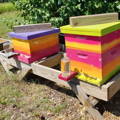
• Regular Mite Monitoring: Implement a regular mite monitoring schedule to assess the infestation levels within your hive. There are various methods available for monitoring mite populations, including sticky boards, alcohol washes, and sugar shakes. Choose a method that suits your preferences and accurately reflects the mite levels in your colony.
• Use Integrated Pest Management (IPM) Strategies: Adopt an integrated pest management approach to control mite infestations. This involves combining multiple tactics to minimize mite populations while minimizing harm to the bees and the environment. IPM strategies may include the use of organic acids, essential oils, formic acid treatments, or simple SHV traps.
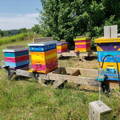
• Rotate Treatment Methods: Mites can develop resistance to specific chemical treatments over time, rendering them ineffective. To combat this issue, it is advisable to rotate the treatments used in your apiary. Alternating between different treatment methods and products can help prevent the development of resistance and ensure effective mite control.
Mite infestations can weaken honeybee colonies, making them more vulnerable to other diseases and stressors. Regularly monitor the overall health and behavior of your colony, paying attention to signs of decreased brood viability, reduced population, or abnormal behavior. Addressing any health issues promptly can help prevent further damage caused by mites and enhance colony resilience.
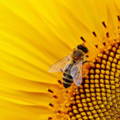
5. Plant Bee-Friendly Flowers
To help honeybees thrive during dearth periods, beekeepers can actively support local flora and encourage the planting of bee-friendly flowers and plants. By providing a diverse range of food sources, beekeepers can help mitigate the impact of dearth periods and support the overall health of honeybee populations.
• Choose Bee-Friendly Flowers: Select flowers that are rich in nectar and pollen and are known to attract bees. Native wildflowers are often excellent choices as they have co-evolved with local pollinators and provide a natural food source. Some popular bee-friendly flowers include lavender, sunflowers, wildflowers, borage, and aster.
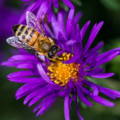
• Provide a Variety of Blooming Seasons: Honeybees need a continuous supply of nectar and pollen throughout the year. Plant a variety of flowers that bloom at different times to ensure a constant food source. This way, honeybees will have access to food during dearth periods when other sources may be scarce.
• Consider Flower Colors and Shapes: Bees are attracted to certain colors and shapes of flowers. They are especially drawn to blue, purple, and yellow flowers, as these colors are easily visible to their eyes. Flowers with open and shallow blooms make it easier for bees to access the nectar and pollen.
• Avoid Pesticides: Pesticides, including insecticides and herbicides, can be harmful to bees and other pollinators. Choose organic and bee-safe alternatives or practice integrated pest management techniques that minimize the use of chemicals.
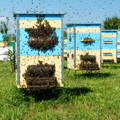
6. Prevent Swarming
Dearth periods can trigger honeybees to swarm in search of better food sources. Swarming can lead to the loss of valuable worker bees and weaken the colony. To prevent swarming, beekeepers can use swarm prevention techniques such as providing adequate space for the colony, ensuring a healthy queen, and maintaining optimal hive conditions.
In conclusion, caring for honeybees during dearth periods is a vital responsibility for beekeepers. By staying proactive, informed, and implementing the essential tips provided, beekeepers can ensure the health and survival of their honeybee colonies during these critical times. Remember, the efforts put into beekeeping during dearth periods directly impact the overall well-being of these important pollinators.
Trending Products
Copyright©2023 All rights reserved. We love to have you share our article as long as you include a direct link to this page.This article or any portion thereof , including all images, may not be reproduced or used in any manner whatsoever without the express written permission of Gypsy Shoals Farm.



